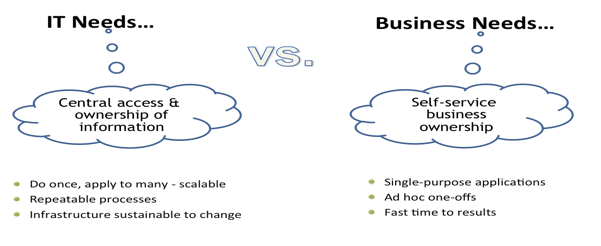 According to The Data Warehousing Institute (TDWI), “Agile business intelligence addresses a broad need to enable flexibility by accelerating the time it takes to deliver value with BI projects.”
According to The Data Warehousing Institute (TDWI), “Agile business intelligence addresses a broad need to enable flexibility by accelerating the time it takes to deliver value with BI projects.”
Essentially, TDWI’s definition of Agile BI is doing more in less time. Of course, that sounds very appealing, but the question is: How does Agile BI accomplish more in less time?
As a pioneer in Agile BI, Pentaho has interviewed several customers using our Agile BI solution and have found that the most effective approach to BI includes the following actions:
- Creating smaller projects that add up to the big picture
- Rapidly deploying the initial solution, focusing on a few reports or metrics at a time
- Building on that foundation with frequent iterations and checkpoints
- Facilitating constant collaboration between Business and IT throughout the life of the project
By starting small and growing bigger through multiple iterations, Agile BI creates a rapid development environment for BI project teams and avoids keeping IT working in a vacuum. These projects stay on track and improve over time through constant collaboration between business and technical users.
Unfortunately, most of practitioners still approach BI the old-school way. This is due to the industry culture, outdated skills in the market and access to only traditional/proprietary BI tools that have dominated the market for the past 10 to 20 years.
The times have changed. The BI buyer now has several options such as: Data Discovery tools, Cloud-based and hosted solutions, and unified Data Integration and Visualization platforms. The new school rules have opened the playing field making it easier for BI practitioners to be more productive and get something up and running quickly.
Download the Agile BI Practical Guide – How to Lead your BI Project with a Brand New Approach which was developed from interviewing our customers who have previous experience with other BI tools before choosing Pentaho. The guide summarizes the top three major reasons that BI projects fail and describes a simple four-step process for solving these issues.
If you are attending TDWI World Conference in San Diego this week make sure to stop by our booth (#209) to learn more about Pentaho Agile BI.
– Farnaz Erfan, Pentaho, Product Marketing
This blog was originally posted on Business Intelligence from the Swamp.

